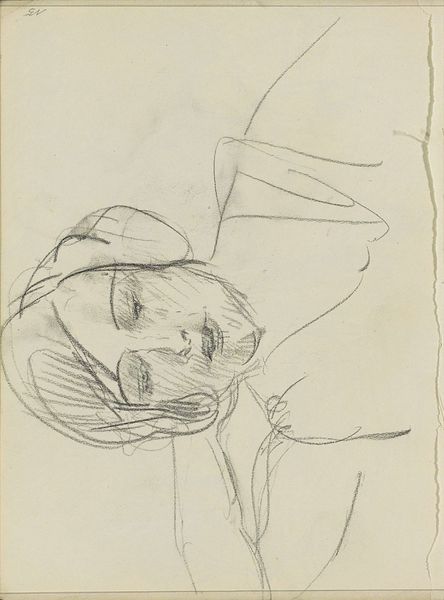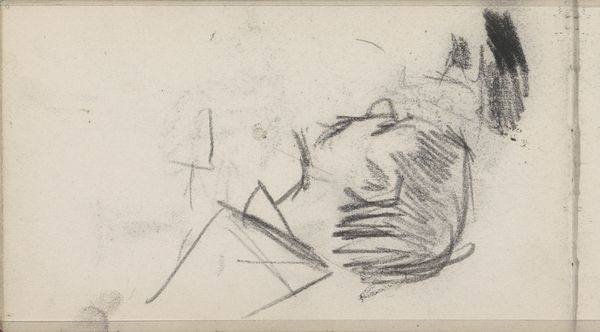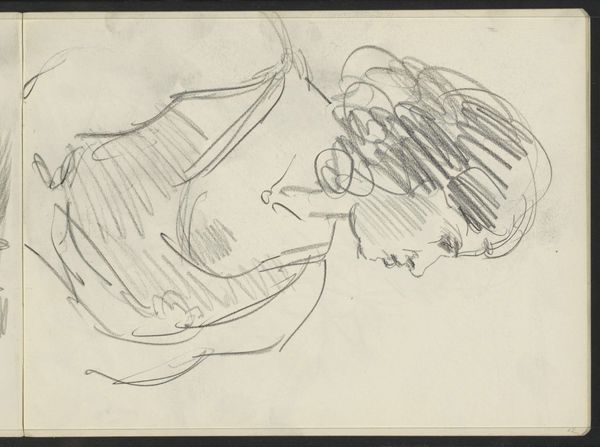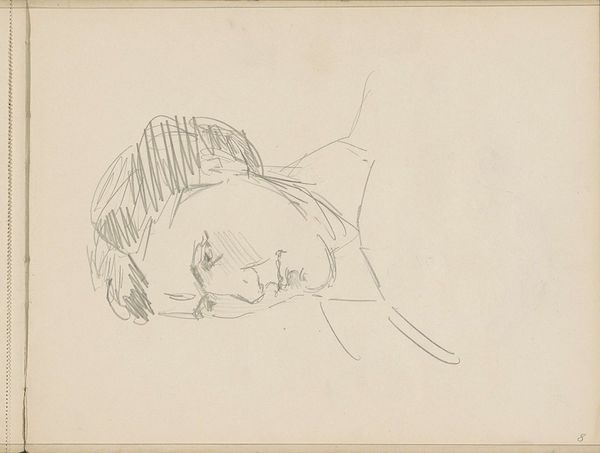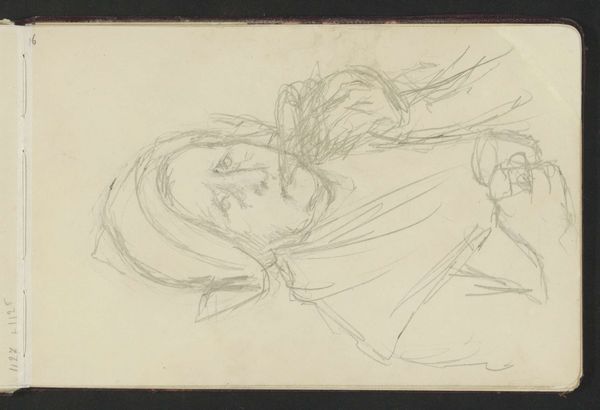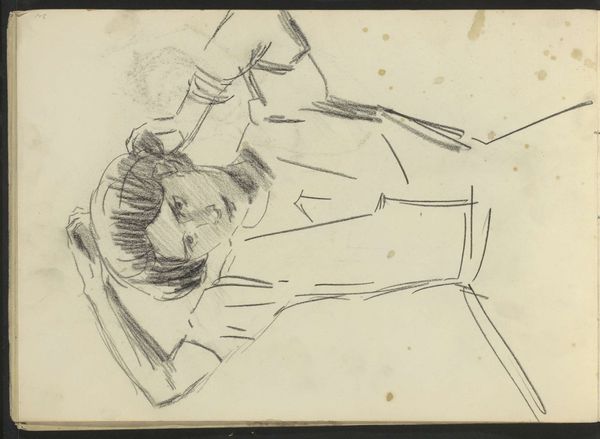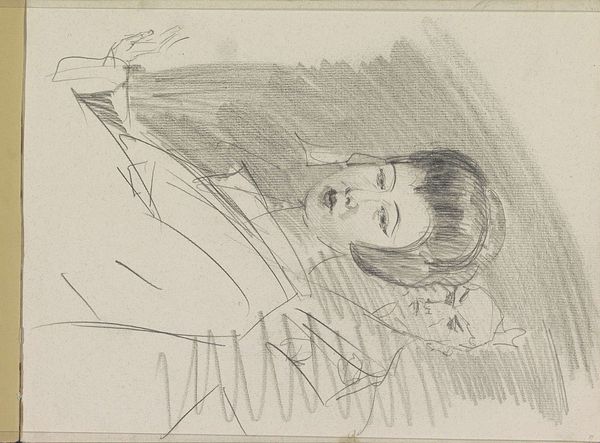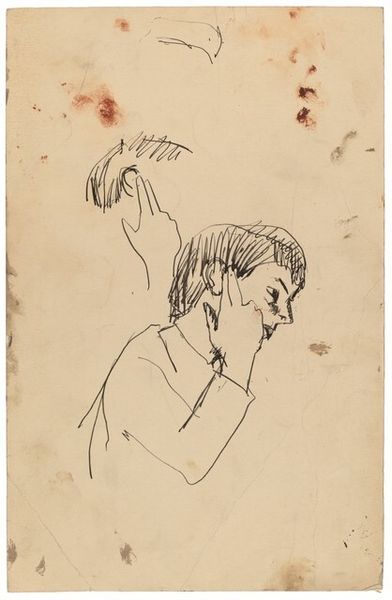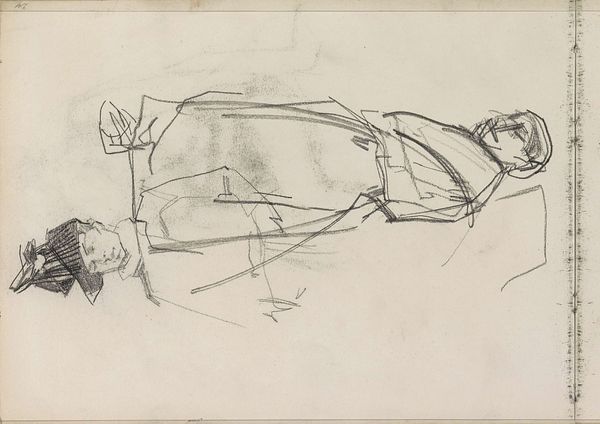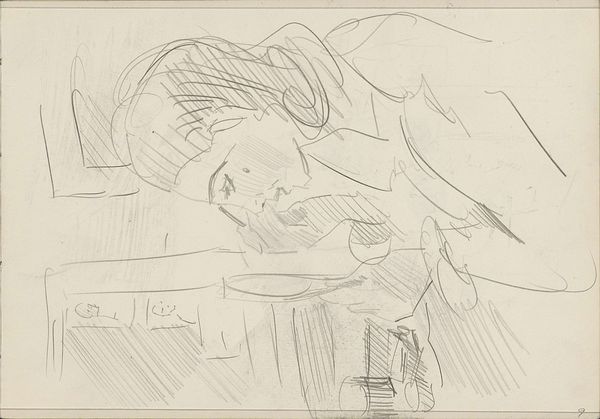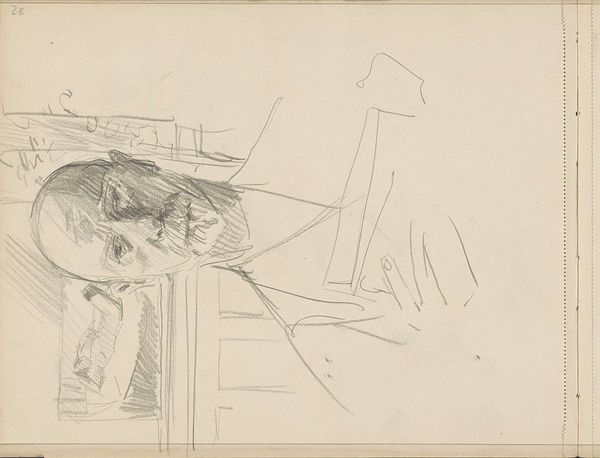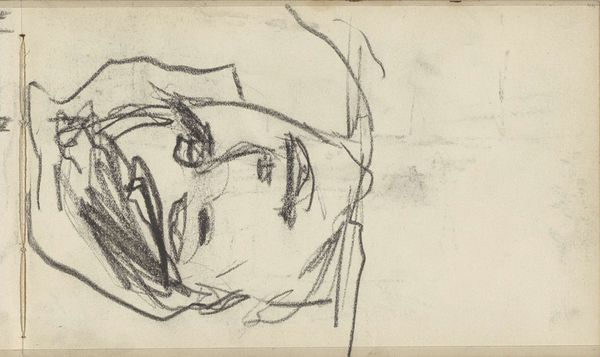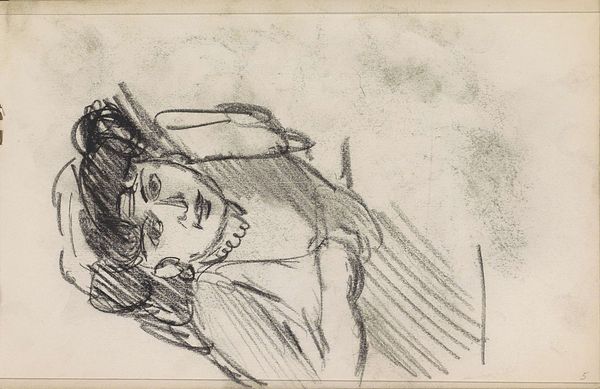
Copyright: Rijks Museum: Open Domain
Curator: This is *Portret van een onbekende vrouw*, or Portrait of an Unknown Woman, by Isaac Israels, dating roughly between 1886 and 1934. The medium is pencil on paper. It resides here at the Rijksmuseum. Editor: There’s a raw vulnerability here. The loose strokes and unfinished feel give the sense of a fleeting moment captured, an immediacy. Curator: Absolutely. Israels, influenced by Impressionism, sought to capture modern life, and this drawing exemplifies that. Consider how a seemingly simple sketch can still resonate so deeply, particularly since we do not know her name or specific story, making the image itself speak volumes. Editor: And the labor…pencil drawings demand a very different physicality than paintings. This looks quickly executed, perhaps on the move? Where was it done, and what paper did he have at hand? We know drawings of this nature were studies, preparations. How might this fit into a bigger project? The unfinished quality prompts one to reflect on production. Curator: Good point! As an object, though, I read her direct gaze as speaking beyond that context of artistic production. What visual echoes does she awaken for you? Consider the period itself, late 19th century – this aesthetic aligns with growing movements emphasizing naturalism. It makes you wonder what type of class identity this suggests with an almost "anti" approach to an ornate Gilded Age style of representation. Editor: Her pose does hint at the emerging roles for women. I am also caught by its utilitarian aspect. This looks more like an observation in the streets of Paris where he settled during this time than a formal commission of someone wealthy. That very pencil was likely one of hundreds sold to amateurs in a store not unlike ours, an increasingly industrial materiality that provided the tools of artistic making to the masses. Curator: An accessible medium allowing him, as the son of Jozef Israels, also to break from a particular type of representation and explore, visually, his present context. The bow at her collar even presents itself as almost nonchalant. Its slightly off-center orientation reads, in some ways, against the expectations for rigid, formalized portraits during that time. Editor: Yes, indeed. Israels seems conscious of a changing social landscape, and it's embodied not just in his subject but the very manner he makes an image. Thank you, this really got me thinking about the social history inherent in material choices. Curator: Thank you; by considering symbolic meaning we find layers beyond its initial appearance, and appreciate this quiet encounter.
Comments
No comments
Be the first to comment and join the conversation on the ultimate creative platform.

